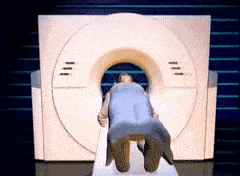 |
| What is Tomography and How it Works? |
What is Tomography and How it Works?
Think of the
last time you or a loved one was injured. You likely visited the hospital, and
that they may have checked the world of injury with an imaging procedure. Maybe
it had been an X-ray machine, which delivers a beam of sunshine into the body,
allowing visualization of organs that aren't ready to be seen by the eye (that
is, without cutting into the body and opening up the skin). About 40 years ago,
technology advanced beyond the only plane images displayed on a bit of film and
is now ready to produce a cross-sectional image of your organs, bones and
tissues.
✋Read Also This Interesting Article: 👉 What is Mammography or Mammogram?
Tomography may
be a visualization process that produces a picture of what is inside a tissue.
Imagine a loaf of bread. Once you dig the loaf, you're then ready to view what
was once hidden by an outer layer of crust -the slice, or cross-section, gives
you the power to ascertain each side of the piece of bread. An equivalent idea
applies for tomography. Although the image generated remains two-dimensional,
doctors are now ready to see into tissues.
✋Read Also This Interesting Article: 👉 What is a BiPAP Machine and The Way Does It Work?
Even more informative is that the ability of tomography to get images of multiple slices of the tissue, from one end to the opposite. Re-evaluate of the bread example. Say you switch the loaf of bread vertically and start slicing it from the highest right down to rock bottom. Each slice could also be a touch different. Perhaps one among the slices reveals a hole within the bread or another contains a green mold. The potential of imaging serial slices allows the doctor to ascertain through the entire tissue, one slice at a time, in an attempt to not miss anything which will indicate injury or disease.

0 Comments